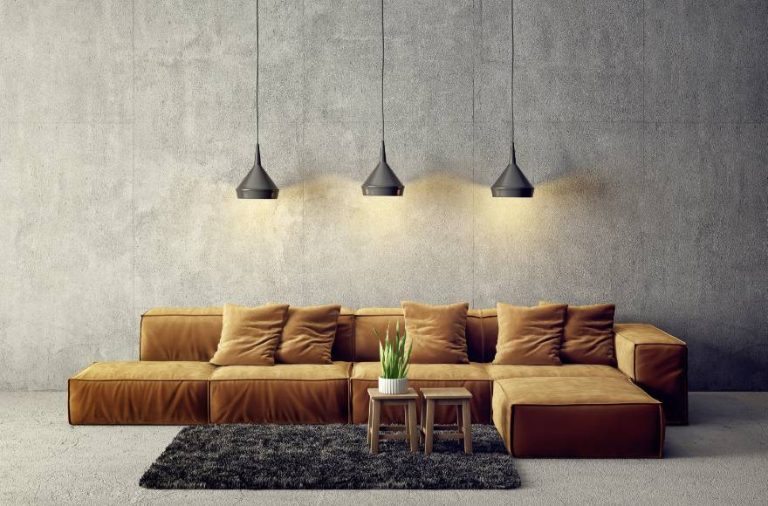How to Float Living Room Furniture Without Outlets?
Imagine stepping into a stunning, dome-shaped lake house, eager to create a modern, floating effect with your living room furniture – but there’s a catch, no floor outlets available.
Don’t worry, we’ve got you covered.
Discover innovative solutions and clever tips to achieve that seamless, airy look you desire.
Let’s dive in.
how to float living room furniture with no floor outlet
To float living room furniture with no floor outlet, you can utilize existing wall outlets for lamps and electronics, employ the help of an electrician to install floor outlets, or run extension cords discreetly under carpeting to reach outlets.
Incorporating a focal point, pulling furniture away from walls, using light visual weight furnishings, and maximizing vertical space can help create an expansive and visually appealing layout.
By positioning furniture strategically, utilizing natural light, and opting for multi-functional pieces, you can make the room appear larger and more functional without the need for a floor outlet.
Key Points:
- Utilize existing wall outlets for lamps and electronics
- Employ an electrician to install floor outlets
- Run extension cords discreetly under carpeting to reach outlets
- Incorporate a focal point in the layout
- Pull furniture away from walls to create a visually appealing layout
- Use light visual weight furnishings and maximize vertical space to create an expansive feel
Check this out:
Utilizing Wall Outlets For Living Room Furniture
- Strategically position furniture against walls
- Create groupings around wall outlets
- Define living zones within the room
In the absence of floor outlets, homeowners can explore the option of installing them to facilitate the use of lamps and electronic devices. By enlisting the expertise of an electrician, floor outlets can be seamlessly integrated into the carpeted floor, providing a practical solution for floating living room furniture. Additionally, running extension cords discreetly underneath the carpeting to reach existing outlets can offer flexibility in configuring the layout while maintaining a clean and organized appearance.
- Install floor outlets with the help of an electrician
- Seamlessly integrate floor outlets into the carpeted floor
- Run extension cords underneath the carpeting for added flexibility
Advice On Consulting An Electrician For Floor Outlet Installation
- Consult with a qualified electrician for expert advice
- Ensure compliance with safety regulations
- Receive recommendations on suitable locations for floor outlet installation
Making Use Of Existing Tv Outlets For Furniture Placement
In scenarios where floor outlets are not readily available, homeowners can leverage existing TV outlets for placing living room furniture effectively. By utilizing an entertainment armoire that can house electronics and conceal cords, the TV outlet can serve as a centralized point for arranging seating and entertainment elements. This approach not only streamlines the layout but also minimizes the need for additional outlets, simplifying the process of floating furniture in a space with limited floor connectivity.
Key Points:
- Utilize entertainment armoire for electronics and cord management
- Centralize furniture placement around the existing TV outlet
- Simplify layout by minimizing the need for additional outlets
User Quotes On Dealing With Limited Outlets
- Sarah found that utilizing wall outlets for furniture placement helped in creating a cohesive layout in her living room.
- Mark emphasized that consulting an electrician for floor outlet installation was a game-changer in floating his furniture without compromising on safety.
- Emily shared how making use of existing TV outlets for furniture positioning saved her the hassle of dealing with additional electrical work.
Creating A Focal Point In Floating Furniture Layout
In a living room with limited floor outlets, establishing a focal point can anchor the floating furniture layout and enhance the overall aesthetic appeal. Whether it’s a TV, fireplace, or a captivating view from a window, incorporating a prominent feature can guide the arrangement of seating and decor elements. By strategically positioning furniture around the focal point, homeowners can achieve a balanced and visually engaging living room design despite the constraints of outlet locations.
Tips for creating a balanced living room layout:
- Anchor the room layout with a focal point
- Guide furniture arrangement around the central feature
- Create a visually engaging living space
Tips For Avoiding A Small Appearance In The Room
- Pull furniture away from walls for a spacious appearance
- Use light visual weight furnishings for an expansive feel
- Incorporate mirrors and maximize vertical space
Using Light Visual Weight Furnishings For An Expansive Look
When floating living room furniture in a space with no floor outlets, opting for light visual weight furnishings can contribute to a sense of openness and airiness. Choosing pieces with slender legs, sleek profiles, or light hues can visually expand the room and prevent it from feeling cluttered. By incorporating light visual weight elements strategically throughout the space, homeowners can create a harmonious and inviting environment that maximizes both style and comfort.
Tips for Floating Furniture in a Space with No Floor Outlets:
- Select furniture with slender legs and sleek profiles
- Choose light-colored pieces to visually enlarge the room
- Strategically place light visual weight furnishings for an open ambiance
Enhancing Room Size With Neutral Color Palette
A neutral color palette can play a significant role in enhancing the perceived size of a living room when floating furniture without floor outlets. Colors like white, cream, tan, or gray can create a sense of lightness and spaciousness, making the room feel more expansive and inviting. By incorporating neutral tones on walls, furniture, and decor accents, homeowners can establish a cohesive and serene atmosphere that elevates the overall design while effectively managing the challenges posed by limited outlet accessibility.
- Utilize white, cream, tan, or gray tones for a spacious feel
- Create a cohesive and serene atmosphere
- Enhance room size through neutral color palette
Maximizing Space With Strategic Furniture Placement
- Select small-scale furniture for optimal space utilization
- Leverage natural light for a bright and inviting atmosphere
- Incorporate multi-functional pieces and designated traffic paths
FAQ
Should I float my sofa?
Floating your sofa can create a more inviting and cozy atmosphere in your space. By pulling the sofa away from the wall, you can make the room feel more open and welcoming, rather than having it pushed up against a wall creating dead space. Floating the sofa also allows for better traffic flow around the seating area, making it easier for people to move around the room without feeling constrained by the furniture placement. Considering these benefits, floating your sofa might be a good idea to enhance the overall look and feel of your living space.
How to arrange small living room furniture with TV?
When arranging furniture in a small living room with a TV as the focal point, consider placing the television on a wall that is easily viewable from different seating areas. Position seating such as a sofa or chairs facing the TV to maximize comfort and functionality. To make the room feel more spacious, opt for space-saving furniture like a compact coffee table or nesting side tables.
Incorporate versatile pieces like an ottoman that can serve as both a seat and a footrest to optimize the functionality of the space. Consider using a rug to delineate the seating area and create a cozy ambiance in the room. By arranging the furniture strategically around the TV, you can create a balanced and visually appealing layout that maximizes both the available space and the viewing experience in your small living room.
What effect does the use of floating furniture arrangement have on a room?
When floating furniture arrangement is employed in a room, it can create a sense of openness and airiness. By allowing the eye to see beneath the furniture, the space appears larger and more spacious than it actually is. This visual trickery can make a room feel less cluttered and more inviting, enhancing the overall ambiance of the space.
Furthermore, the use of floating furniture arrangement can contribute to a modern and sleek aesthetic. The clean lines and minimalist look created by furniture with legs and no skirts can give the room a contemporary feel, adding a touch of sophistication to the decor. Overall, floating furniture arrangement can have a transformative effect on a room, making it appear larger, more stylish, and inviting.
Where to place a sofa in a living room?
In a living room, it is recommended to place the sofa in the western or southwestern direction to promote stability and grounding energy. Positioning the sofa against the northern or eastern wall can enhance a sense of security and support within the space. Optimal placement for the TV unit would be in the southeast corner, which can help create a balanced and harmonious layout in the living room.
💡 Did You Know?
1. In Japan, there is a traditional practice called “okibariyasu” where furniture is hoisted up through the windows using ropes and pulleys to avoid scratching the floors and walls.
2. In ancient Egypt, it was believed that certain furniture pieces could attract or repel spirits, leading to specific placement and design considerations in the living room.
3. A little-known fact is that certain types of furniture can actually increase the amount of natural light in a room, giving the illusion of more space and a brighter atmosphere.
4. Feng shui principles suggest that floating furniture in a living room can create a more harmonious and balanced energy flow in the space, promoting relaxation and positive vibes.
5. Some designers use magnetic levitation technology to create floating furniture pieces, giving a futuristic and minimalist look to any living room without the need for floor outlets.

